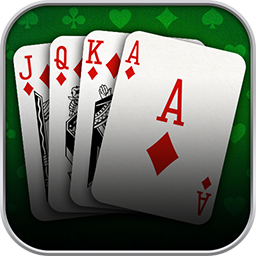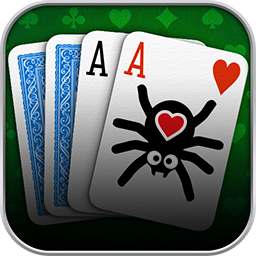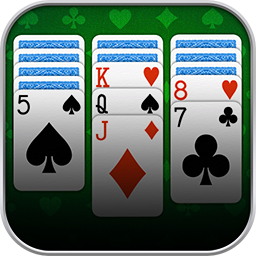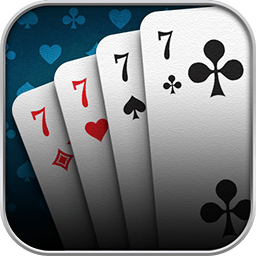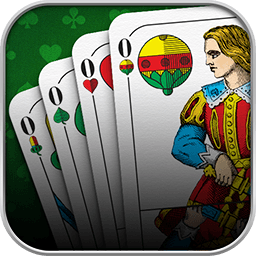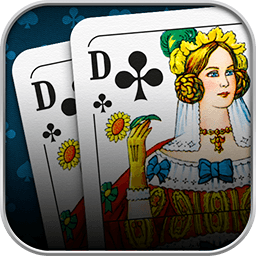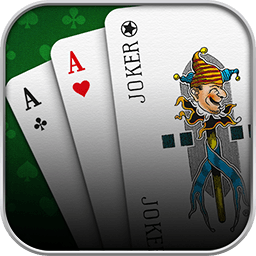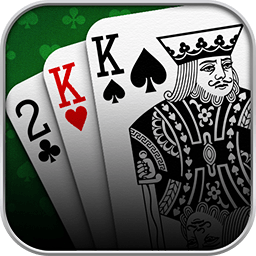The goal of Rummy is to arrange all the cards in your hand into combinations of three or more cards called melds. There are two types of melds in Rummy: sets and runs.
A set, also known as a group, is a meld consisting of at least three cards of the same rank, for example three Queens.
A run, also known as a sequence, is a meld consisting of at least three consecutive cards of the same suit. For example a Four of Clubs, Five of Clubs, and Six of Clubs, would be a valid run.
This is the most basic explanation of sets and runs in Rummy. However, there are some limitations and important things to note when playing your cards as sets and runs. On this page, we explain in detail what sets and runs are in Rummy, how to play them and give you some tips for making the most of your melds.
Sets in Rummy
As we already covered, in the game of Rummy, a set, or a group, is a meld consisting of at least three cards of the same rank. One important limitation is that each suit can only be used once in the same set. For example, you can’t have two Queens of Hearts cards in the same set – each card in the set must be of the same rank, but a different suit. This means a set is limited to three or four cards.
If you are playing with the standard rules, the order of the cards in your set is not important. You can have any three cards of the same rank and different suits.
At the Rummy Palace, we also offer a custom rule called Strict Groups. With this custom rule, sets must always follow the order Clubs, Spades, Hearts, Diamonds. Meaning if you had a Club, Heart and Diamond of the same rank, but not a Spade, this would not be a valid set, as there would be a gap in the required order of suits in the group.
Examples of Sets
The following are a few examples of valid sets in Rummy.
- Ace of Diamonds, Ace of Hearts, Ace of Spades.
- Seven of Clubs, Seven of Diamonds, Seven of Hearts, Seven of Spades.
- King of Clubs, King of Spades, Joker.

Runs in Rummy
A run in Rummy, also known as a sequence, is an arrangement of at least three cards of consecutive rank of the same suit, for example a Seven, Eight and Nine of Diamonds. Two cards of the same suit and rank cannot be used twice in a run. For example, a Seven of Hearts, two Eights of Hearts and a Nine of Hearts would not be a valid run. You would only be able to play the Seven, Eight, and Nine together.
As there are thirteen ranks of card in traditional French-suited playing cards, a run is limited to thirteen cards.
Ace in Rummy Runs
When using an Ace in a run, the Ace can be either low or high, meaning it can be the first card in a run, followed by a Two and Three, or it can be the last card in a run, preceded by a Queen and a King.
Remember, your first meld must total at least 30 points. And an Ace placed before a Two will only contribute one point to this total, while an Ace after a King will be worth eleven points.
Examples of Runs
The following are a few examples of valid runs in Rummy.
- Ace of Diamonds, Two of Diamonds, Three of Diamonds, Four of Diamonds, Five of Diamonds.
- Jack of Hearts, Queen of Hearts, King of Hearts, Ace of Hearts.
- Six of Clubs, Seven of Clubs, Joker, Nine of Clubs.

Using Jokers in Sets and Runs
The Joker is a really valuable card to have in your hand in Rummy, as it can be played in place of any natural card in a set or run.
For example, if you have a Three of Clubs, a Five of Clubs and a Six of Clubs, but no Four, you could use a Joker in place of the Four of Clubs to create a five card run.
Or if you had two cards of the same rank, say two different Jacks, you could use a Joker to form a set of three cards.

It is also permitted to place two Jokers next to each other in a meld. For example, a Six of Hearts, a Joker, another Joker, and a Nine of Hearts would be a valid run. The only restriction here is that you cannot have more Jokers than natural cards. For example, you could not take a Five and a Seven of the same suit, combine it with three Jokers and call it a five card run. Nor could you take any natural card and meld it with two Jokers and call it a three card set. There must always be at least as many natural cards as there are Jokers for a set or run to be valid.
Tips for playing Sets and Runs
Understanding what sets and runs are is only half the battle. Knowing how to find the best melds and play the right combinations is what sets apart the best Rummy players.
Sorting your hand by either suit or rank can make it easier to identify potential sets and runs. When you play Rummy online at the Rummy Palace, on receiving your hand cards at the beginning of the round, your hand will automatically be sorted by suit. Sorting by suit will help you identify runs that you already have, or potential runs you could complete if you draw the right card, as cards in a run must be the same suit.
At the click of a button, you can also sort your cards by rank. Sorting by rank will enable you to easily spot any groups, as groups must consist of cards of the same rank.
From then onwards, it’s advisable to manually sort your cards in a way that works for you. You can arrange them into valid sets and runs that you’re not ready to play face up yet, partial melds where you’re waiting for the final card to complete the set or run, and outsiders – the cards you can’t do anything with at that point in time.
Keep in mind that you can use your Joker in place of any card in situations where you don’t have the natural card to complete a set or a run. But remember – try not to hold on to your Joker for too long. If another player ends the round and you have a Joker in your hand, this card alone will cost you 20 points.
For more tips and strategies for playing sets and runs, check out our lesson on melding.
That concludes our page about sets and runs in Rummy, also known as groups and sequences. Armed with this new knowledge, why not try a round of Rummy at the Palace, or head to our Rummy lessons to learn more about the intricacies of the game.

